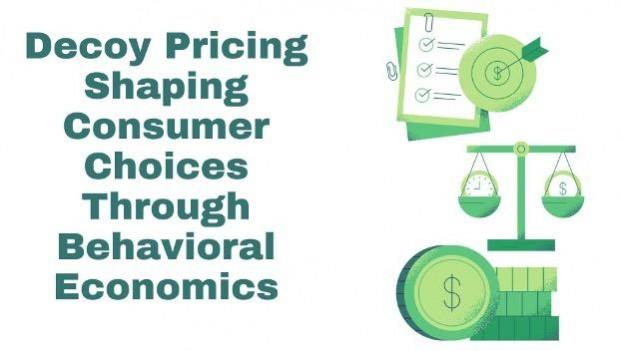
In this modern era, as pricing strategies evolve, businesses increasingly adopt psychological approaches to influence consumer decision-making. Karthik Ramakrishnan, a researcher with expertise in behavioral economics, examines how decoy pricing impacts consumer perceptions and purchasing behavior. His work highlights the strategic application of decoy pricing across industries while addressing its ethical implications.
The Science Behind Decoy Pricing
Decoy pricing, rooted in behavioral economics, leverages the human tendency to evaluate options relatively rather than absolutely. This strategy introduces a "decoy" option designed to make a target option appear more attractive. By creating an asymmetrically dominated choice, businesses guide consumers toward higher-value products.
Psychological Drivers of Decoy Pricing
Several psychological principles contribute to decoy pricing's success. Cognitive ease simplifies decision-making by presenting options that are easier to compare. Loss aversion amplifies this effect by framing the decoy as a less valuable option, making the premium choice feel like a gain.
Structuring Effective Decoy Pricing Models
Creating an effective decoy pricing model requires careful design. The decoy must be priced close to the premium option but offer fewer features, ensuring its inferiority is clear. For instance, a subscription service might offer:
- Basic Plan: $10/month with limited features.
- Decoy Plan: $18/month, offering slightly better features.
- Premium Plan: $20/month, significantly more value than the decoy.
This setup highlights the premium plan's value, steering customers toward the highest-tier option. Studies show that introducing decoy options increases the target choice's selection rate by up to 30%.
Applications Across Industries
Software and Digital Services
Subscription-based models widely use decoy pricing to promote premium tiers. Offering multiple feature sets encourages users to perceive higher-value subscriptions as the most reasonable choice, maximizing revenue while maintaining customer satisfaction.
Food and Beverage
Restaurants use decoy pricing to influence menu choices. A high-priced wine or meal option may serve as a decoy, making moderately priced options appear more reasonable. Fast-food chains also structure combo meal sizes to nudge customers toward larger, more profitable options.
E-Commerce Platforms
E-commerce businesses use decoy pricing to enhance the perceived value of premium products. Displaying three product options highlights the benefits of the most expensive choice, driving higher conversion rates and boosting average order values. Additionally, this strategy helps simplify decision-making for customers, improving their overall shopping experience and fostering greater customer satisfaction and loyalty.
Ethical Considerations
While decoy pricing effectively guides consumer choices, it raises ethical concerns. Critics argue that it manipulates decision-making by exploiting cognitive biases. Transparency is essential to maintaining trust; consumers should feel empowered rather than misled. Businesses must ensure all pricing options provide genuine value and align with ethical marketing practices to avoid backlash.
Optimization Through A/B Testing
A/B testing refines decoy pricing strategies. By presenting pricing structure variations to different audience segments, businesses determine the most effective configurations. Metrics like conversion rates and average order value provide actionable insights for optimizing decoy designs. Regular analysis ensures pricing strategies adapt to evolving market conditions and consumer preferences.
Future Directions in Decoy Pricing
Emerging trends, such as dynamic pricing and personalized offers, complement decoy pricing. Integrating AI and machine learning enhances the strategy by analyzing customer behavior and tailoring pricing models in real time. Additionally, exploring cross-cultural variations in decoy pricing effectiveness allows global businesses to refine their approaches based on regional consumer preferences.
In conclusion, Karthik Ramakrishnan emphasizes the transformative role of decoy pricing in modern marketing strategies. By leveraging behavioral economics principles, this approach guides consumer decisions, enhances perceived value, and drives sales. However, businesses must balance effectiveness with ethics to maintain transparency and trust. As pricing strategies evolve, integrating decoy pricing with advanced technologies and ethical frameworks will ensure its relevance and sustainability in marketplaces.













